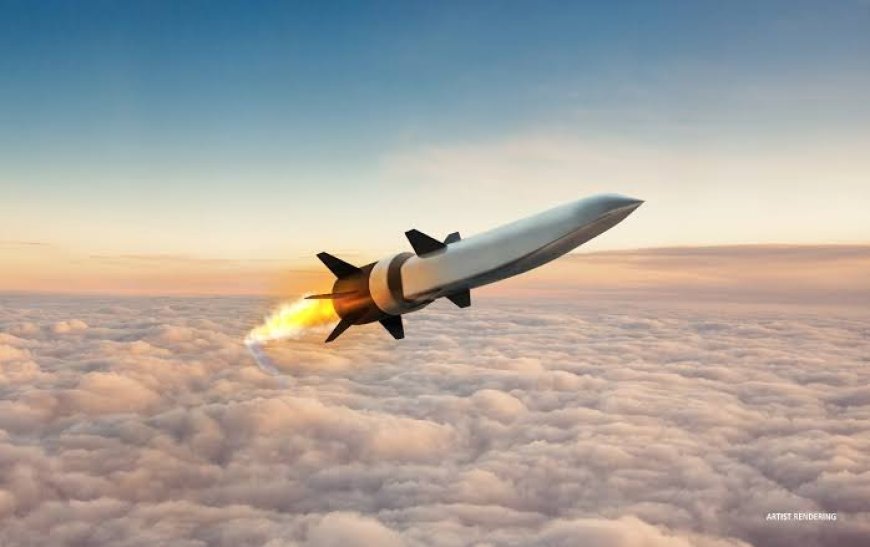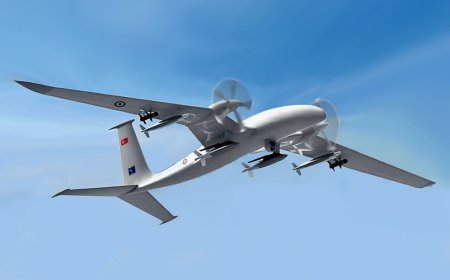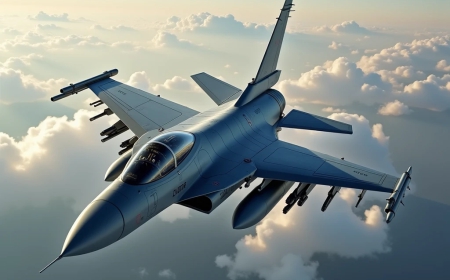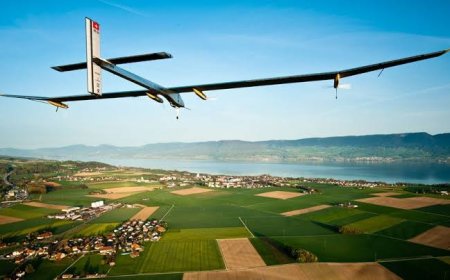Hypersonic missile technology: A new arms race has begun!
In recent years, a fierce competition has begun between the world's major military powers and influential countries over hypersonic weapons/missile technology. And only 6 countries claim to be successful in this competition. Among them, countries like Russia, China, America, Iran, India and North Korea are leading. A hypersonic speed system refers to an aerial or weapon system that is capable of achieving speeds of more than Mach 5, that is, about 6,174 kilometers per hour or more.

The characteristics of this type of aerial system are not only high speed, but also the ability to change speed and direction during flight. As a result, it becomes very difficult to detect and counter them by conventional air defense systems. This technology is generally divided into three main categories. Hypersonic Glide Vehicle (HGV), Hypersonic Cruise Missile (HCM) and Hypersonic Aero-Ballistic Missile. Each type has its own tactical advantages. Which provides the ability to hit targets in a very short time and at high speed.
Yesterday, April 25 (Friday), the US Department of Defense 'Pentagon' announced that the successful test of the Long-Range Hypersonic Weapon (LRHW) system, known as "Dark Eagle", has been completed from the Cape Canaveral Space Force Station in Florida. This was actually the country's second successful test after the success of December 2024. The 7.4-ton "Dark Eagle" hypersonic missile has a top speed of Mach 5 (about 6,174 kilometers per hour) and a maximum range of about 2,776 kilometers.
The US Department of Defense 'Pentagon' closely verified the real technical capabilities and incredible speed of this hypersonic weapon/missile by launching it from Space Launch Complex-46 in Florida. America's Lockheed Martin Corporation designed and built this high-tech surface-to-surface boost-glide hypersonic weapon and its main user is the US Army. Through this, the United States has proven that, along with Russia and China, they are also in a very strong position in the race for hypersonic technology.
Moreover, in 2023-24, America's air-launched AGM-183A hypersonic missile (1,000-mile range) was successfully launched from a B-52 Heavy Strategic Bomber aircraft, before which the country had failed to test this system a total of eight times. Meanwhile, the Pentagon has requested $6.9 billion in the current fiscal year 2025 for the development and research of hypersonic weapons. Which is much more than the $4.7 billion in the last fiscal year 2023.
Although countries like America, Russia, China, Iran, North Korea and India are ahead in this new unimaginable high-speed hypersonic technology of the 21st century, in terms of success in the real battlefield, Russia is still the only country that has created a huge stir around the world by using various series of hypersonic missile systems on an estimated hundred targets in Ukraine from 2022 to December 2024. However, it is not yet time to call it a game-changer weapon.
Currently, Russia has unveiled three series of hypersonic missiles to the world. Among them, the air-launched 'Kinzhal' (KH-47M2 Kinzhal) has a maximum speed of Mach 10 (about 12,300 kilometers per hour) and a maximum range of about 2,000 kilometers. On the other hand, the submarine- and warship-based 'Zircon' (3M22 Zircon) hypersonic cruise missile with a scramjet engine and a range of 1,000 kilometers has a maximum speed of Mach 9 (about 11,025 kilometers per hour).
In addition, Russia uses the most short-range tactical Iskander (Iskander-M) series hypersonic missiles in the Ukraine war. The land-based AE (9K720) missile with a nuclear/conventional warhead capable of a range of 500 kilometers has a maximum speed of Mach 6 to 7 or about 7,408.8 kilometers per hour. However, the Ukrainian military has reported that they have already been able to destroy or intercept about fifty such Iskander-M hypersonic missiles in the air with their air defense system.
Along with Russia and America, the Red Giant China is far ahead in the global competition in hypersonic technology. The country has designed and developed several series of its own high-tech hypersonic missile systems. One of which is the air-launched based DF/KF-21 (CH-AS-X-13) hypersonic ballistic missile. The speed of this new generation missile with a range of 3,000 kilometers is Mach 10.0 or about 12,348 kilometers per hour.
Along with the DF/KF-21 hypersonic missile, China unveiled another powerful and high-tech DF-17 missile to the world. This hypersonic missile system achieves high speeds using gravity-assisted glide technology. According to information provided by American intelligence agencies, the range of the DF-17 Glide technology hypersonic missile system based on ramjet or scramjet engine technology may be 1,800 km to 2,500 km and the maximum speed may be about Mach 5 or more.
Meanwhile, India is trying its best to move forward in hypersonic weapons system engineering by relying on its own technology. In particular, a few days ago, India's Defense Research and Development Organization (DRDO) successfully tested the new generation Hypersonic Glide Vehicle (HGV) powered by scramjet engine. Its maximum speed was Mach 6 (about 7,408 km/h). And DRDO's DRDL lab successfully tested the Active Cooled Scramjet Combustor ground test for about 1,000 seconds, creating a new record.
Meanwhile, Iran and North Korea claim success in hypersonic technology. Especially in recent years, Iran has highlighted the issue of hypersonic missile tests of its own technology to the world. Iran is believed to have designed and developed several series of hypersonic missiles, most likely with Russian technical assistance. Iran recently claimed to have developed and tested the 'Fattah' series of hypersonic missiles with a range of 1,400 km. The speed of which could be as high as Mach 14 (about 15,000 km/h).
Although hypersonic missile technology has been the subject of intense interest and discussion around the world since 2022, there is still mixed reaction among military analysts about its effectiveness in real-world warfare. While some have called it a 'game changer' weapon, it has not yet fully impacted conventional warfare. However, the widespread modernization and development of hypersonic technology within the next decade may radically change the map of military strategy at the global level.
References: Wikipedia, Army Recognition, Euro Asian Times, Popular Machines, Bulgarian Military.

















































